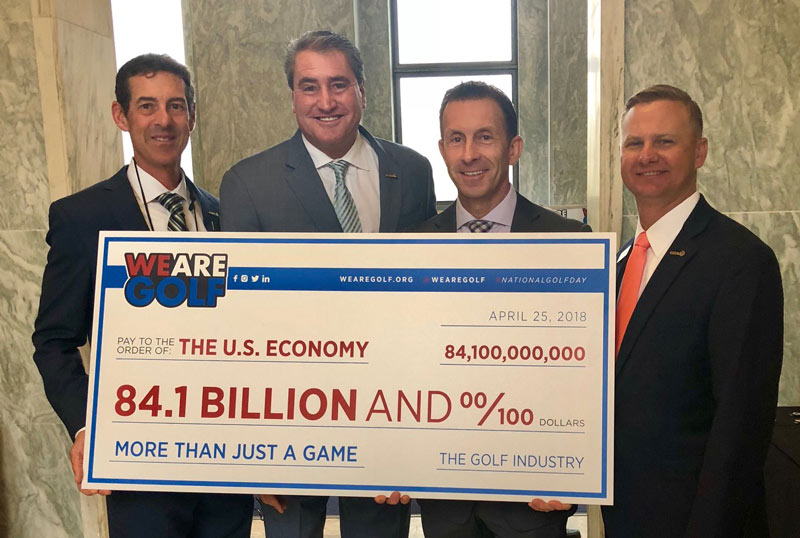
From left: GCSAA board member Kevin Breen, CGCS; GCSAA President Darren Davis, CGCS; GCSAA CEO Rhett Evans; and GCSAA board member Kevin Sunderman during National Golf Day activities in Washington, D.C.
As National Golf Day today has GCSAA and other golf organizations gathered in Washington, D.C., to educate lawmakers about the game’s numerous positive impacts, a new report reveals golf’s economic impact is on the upswing.
Golf drove $84.1 billion in economic activity in the United States in 2016, with a total economic impact of $191.9 billion — including nearly 1.9 million jobs and $58.7 billion in compensation, according to the just-released 2016 U.S. Golf Economy Report.
The findings show a 22 percent increase from $68.8 billion in economic activity in 2011, the last time the U.S. Golf Economy Report was published. The impact includes not only core golf facility operational expenditures and capital investments, but also golf tourism and real estate activity.
Golf course operators are making more with less. Despite a net decline of 737 facilities since 2011, the study found that average revenue grew for the United States’ 15,014 golf facilities, hitting $33.3 billion.
Golf tourism in the U.S. — home to half the world’s golf courses — was another bright spot. $28.5 billion in golf tourism in 2016 made it the second-largest golf industry segment.
New golf home construction recovered strongly to $7.2 billion (up from $3.1 billion in 2011), though it was still lower than pre-housing-downturn levels.
Also up were sales of golf equipment, apparel and media, which totaled $6 billion, with the equipment category posting the strongest sales growth.
Professional tournaments, associations and player endorsements saw spending grow to $2.4 billion (from $2 billion in 2011).
Despite new golf course construction continuing its downward trend, existing facilities pumped $1.9 billion into their courses.
Giving back remains a priority for the U.S. golf industry. Charitable fundraising in 2016 rose to $3.94 billion (compared with $3.91 billion in 2011) despite the drop in the number of golf facilities since 2011.
The 2016 U.S. Golf Economy Report was prepared by TEConomy Partners in agreement with We Are Golf, a collaborative effort among leading golf organizations — GCSAA, the International Association of Golf Administrators, National Golf Course Owners Association, LPGA, PGA of America, PGA Tour and USGA — to support growth of the game.